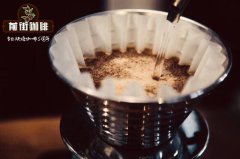Introduction to the origin of boutique coffee beans which continent of Papua New Guinea coffee beans are opposite to Indonesia

Professional coffee knowledge exchange More coffee bean information Please pay attention to coffee workshop (Weixin Official Accounts cafe_style)
Front Street-Papua New Guinea Coffee Introduction
There is such a country in Asia, known as the world's second largest island country, called Papua New Guinea.
Papua New Guinea is the second largest island in the world, located in the east of Indonesia archipelago, the country's climate is quite characteristic. In the southeast coast for the tropical savanna climate, and in the plateau mountain climate is tropical rain forest climate, abnormal hot climate, resulting in heavy rainfall in the region.
Papua New Guinea coffee, is a relatively underdeveloped country, the country's main economic source is agricultural exports, and coffee exports occupy a lot of economic lifeline. Coffee cultivation in Papua New Guinea is generally grown and produced by small farmers!
In Papua New Guinea, cultivation is mainly in the upland, mainly Arabica, which accounts for 95 per cent of all varieties planted, mostly organic, as poor people cannot afford fertilizer. Coffee farms in Papua New Guinea are mostly small, and coffee is grown and produced on these farms or village gardens, accounting for 90% of the production.
There are 20 to 600 coffee trees in each coffee garden, and most of these coffee farmers do not use chemical or artificial fertilizers because, as mentioned above, poor countries cannot afford high fertilizer costs.
Coffee cultivation in Papua New Guinea dates back to the 19th century. Coffee treatment in early Papua New Guinea varies from small farmer to small farmer. Some are sun-dried, washed, and some farmers even peel coffee beans by hand and then put them in rivers for washing. Larger coffee plantations use water washing, fermentation for 24 hours after treatment, followed by 10 days of sun drying,
Papua New Guinea coffee is characterized by a clean, mild taste, balanced acidity and bright aroma with ripe fruit.
Everything is just for spreading and sharing.
END
Important Notice :
前街咖啡 FrontStreet Coffee has moved to new addredd:
FrontStreet Coffee Address: 315,Donghua East Road,GuangZhou
Tel:020 38364473
- Prev

Yega Xuefei Sun Arica Coffee beans Taste aroma and Flavor characteristics introduction to the story of Yega Xuefei coffee producing area
Professional coffee knowledge exchange more coffee bean information please follow the coffee workshop (Wechat official account cafe_style) front street-Yegashifi Arica sun brief introduction the world-famous Yegashifi producing area, formerly a small town in the Sidamo producing area, is a local distribution center and transportation center for collecting coffee beans.
- Next

Papua New Guinea Coffee brand Papua New Guinea Paradise Bird is sour and bright and round
For more information on coffee beans, please follow the Coffee Workshop (official Wechat account cafe_style) Front Street-about Bird washing at Sigri Manor in Papua New Guinea Papua New Guinea is an island country with Indonesia to the west and 160km off the coast of Australia. The Sigri Manor in western Papua New Guinea is home to 90 species.
Related
- Detailed explanation of Jadeite planting Land in Panamanian Jadeite Manor introduction to the grading system of Jadeite competitive bidding, Red bid, Green bid and Rose Summer
- Story of Coffee planting in Brenka region of Costa Rica Stonehenge Manor anaerobic heavy honey treatment of flavor mouth
- What's on the barrel of Blue Mountain Coffee beans?
- Can American coffee also pull flowers? How to use hot American style to pull out a good-looking pattern?
- Can you make a cold extract with coffee beans? What is the right proportion for cold-extracted coffee formula?
- Indonesian PWN Gold Mandrine Coffee Origin Features Flavor How to Chong? Mandolin coffee is American.
- A brief introduction to the flavor characteristics of Brazilian yellow bourbon coffee beans
- What is the effect of different water quality on the flavor of cold-extracted coffee? What kind of water is best for brewing coffee?
- Why do you think of Rose Summer whenever you mention Panamanian coffee?
- Introduction to the characteristics of authentic blue mountain coffee bean producing areas? What is the CIB Coffee Authority in Jamaica?

